Fueling - Keeping it simple
 Thursday, June 5, 2014 at 04:13PM
Thursday, June 5, 2014 at 04:13PM 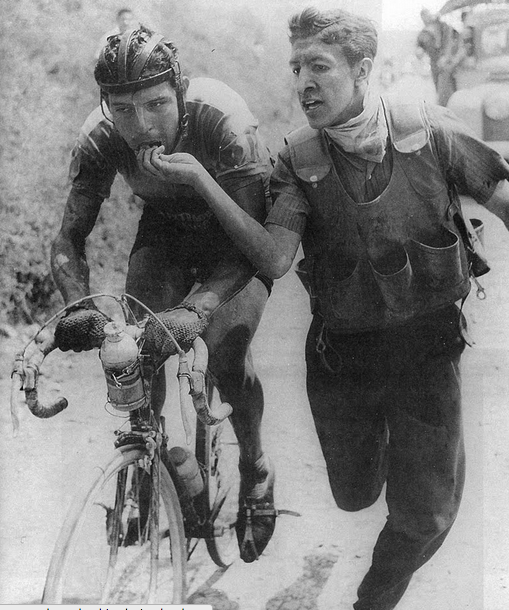 There's little argument that fueling athletic efforts, whether it be outings in the mountains or competitive endurance events, has become increasingly simple over the last two decades. When I first started bike racing in the mid '80's, figuring out what to eat to get through a 4 hour race was tricky. In training, I was eating Pop Tarts and Sweet Tarts, the latter being mostly maltodextrin, a good source of complex carbohydrate which, at the time, was gaining some noteriety in endurance nutrition. But using this stuff while racing was not straight forward. Hell, I didn't even know how many calories I needed each hour to keep from bonking.
There's little argument that fueling athletic efforts, whether it be outings in the mountains or competitive endurance events, has become increasingly simple over the last two decades. When I first started bike racing in the mid '80's, figuring out what to eat to get through a 4 hour race was tricky. In training, I was eating Pop Tarts and Sweet Tarts, the latter being mostly maltodextrin, a good source of complex carbohydrate which, at the time, was gaining some noteriety in endurance nutrition. But using this stuff while racing was not straight forward. Hell, I didn't even know how many calories I needed each hour to keep from bonking.
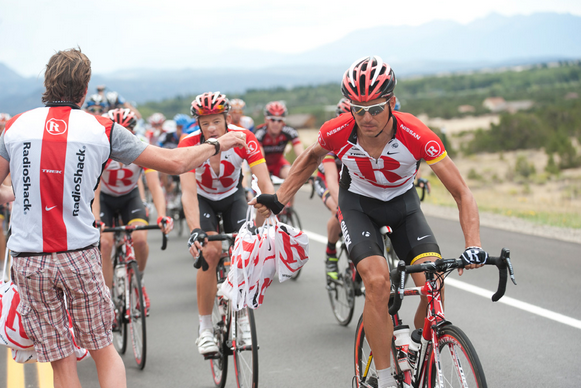 What's in those bags??When I started going to high profile professional races where amatures could compete, as well, I started paying attention to what the pros were eating. No big revelations here. Just cookies and granola bars and stuff like that. Drink mixes were starting to become popular and I remember the first Power Bar in 1987. None of this stuff, except for the drinks, was easy to eat while going hard. I remained perplexed. Even looking at what the Euro dogs were eating didn't help. These guys were sucking down ham and cheese sandwiches, ferchrissakes. Where's the mystery of science in that?
What's in those bags??When I started going to high profile professional races where amatures could compete, as well, I started paying attention to what the pros were eating. No big revelations here. Just cookies and granola bars and stuff like that. Drink mixes were starting to become popular and I remember the first Power Bar in 1987. None of this stuff, except for the drinks, was easy to eat while going hard. I remained perplexed. Even looking at what the Euro dogs were eating didn't help. These guys were sucking down ham and cheese sandwiches, ferchrissakes. Where's the mystery of science in that?
One memorable experiment involved a 100 mile road race in Everett, Washington that took place on a 10 mile circuit. I decided I would do the whole 4 hours on liquid calories alone. Cytomax and Exceed were the two main drinks around then and I did about 5 bottles of Cytomax. I felt great and performed well. This was eye opening. This was also around the time the Gatorade Sports Science Institute was doing a lot of research on gastric emptying and absorption of various concentrations of carbohydrate containing drinks. The military was also involved. Some crazy recommendations came out about fluid and electrolyte replacement during this time that have influenced how athletes feed during training and racing to this day.
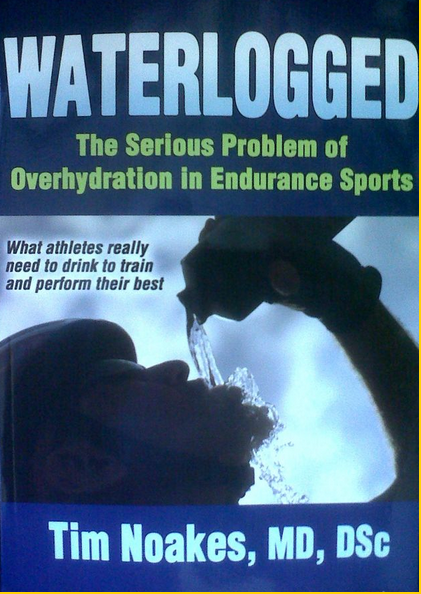 In 2012, Dr. Tim Noakes, a South African exercise science expert and researcher, published "Waterlogged", a intensely researched treatise on the myths and misunderstandings that led to the recommendations mentioned above. I encourage everyone to read this important work. It'll challenge everything you thought you knew about hydration and fueling for athletics. The most significant point of the book concerns hydration and what we think we know about it. But Noakes also confirms that the most important aid to endurance performance is adequate carbohydrate intake.
In 2012, Dr. Tim Noakes, a South African exercise science expert and researcher, published "Waterlogged", a intensely researched treatise on the myths and misunderstandings that led to the recommendations mentioned above. I encourage everyone to read this important work. It'll challenge everything you thought you knew about hydration and fueling for athletics. The most significant point of the book concerns hydration and what we think we know about it. But Noakes also confirms that the most important aid to endurance performance is adequate carbohydrate intake.
Choices
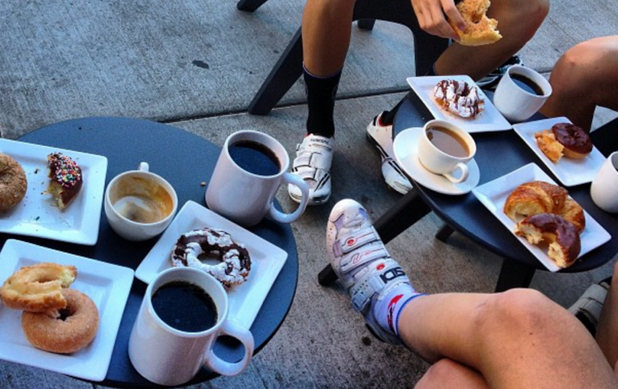 Any visit to the nutrition section at REI will confirm that we have a lot of options when it comes to training and racing fuels. Many claim to have unique ingredients that give them an edge over their competitors. The merit of these claims is certainly up for discussion beyond the scope of this post. What all of them have in common is some form of carbohydrate. You can drink it from your water bottle, slurp it out of a gel packet or chew it from a bar but the idea is to keep the carb calories coming in at about 200-300 calories an hour. I discuss the specifics of this concept here.
Any visit to the nutrition section at REI will confirm that we have a lot of options when it comes to training and racing fuels. Many claim to have unique ingredients that give them an edge over their competitors. The merit of these claims is certainly up for discussion beyond the scope of this post. What all of them have in common is some form of carbohydrate. You can drink it from your water bottle, slurp it out of a gel packet or chew it from a bar but the idea is to keep the carb calories coming in at about 200-300 calories an hour. I discuss the specifics of this concept here.
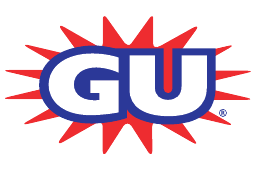 Over the years, companies have added protein, specific amino acids and certain fats to the mixes in hopes of gaining further benefit. The results have been mixed at best. But there's no questioning the benefit of sugar and its cousins for enhancing performance and delaying fatigue. And with the advent of all these products, especially gels, it's never been easier to get what you need. I remember when GU first came out and how relieved I felt that I'd never have to mess around with the food issue again. Never again would I have to spit out anything as I tried to swallow something when a competitor would attack in a race.
Over the years, companies have added protein, specific amino acids and certain fats to the mixes in hopes of gaining further benefit. The results have been mixed at best. But there's no questioning the benefit of sugar and its cousins for enhancing performance and delaying fatigue. And with the advent of all these products, especially gels, it's never been easier to get what you need. I remember when GU first came out and how relieved I felt that I'd never have to mess around with the food issue again. Never again would I have to spit out anything as I tried to swallow something when a competitor would attack in a race.
Now, many of you outside of competitive circles who simply climb and ski for fun shake their heads at those of us sucking "fake food" out of little packets and bottles. You guys would rather eat a sandwich or even a candy bar to get the calories you need. And for people not in a hurry, this actually works fine. The problem is that when your metabolic output goes up we rely more and more on carbohydrate to fuel the effort. Once you're breathing hard enough so that conversation is difficult, glycogen (sugar), becomes the preferred substrate for the effort.
If you're noodling along talking with friends you're burning mostly fat and most humans have nearly an unlimited store of this. As the pace increases, so does the percentage of carbohydrate required to sustain the effort. Some athletes can stave off the transition to mostly carbohydrate metabolism longer than others. Diet and training can delay this point even further. But once you punch it, better keep sucking down the gels or you're going to have to slow down sooner than you'd like.
Pierra Menta Fueling
As most of you know, I spent 2 months of this spring camped in Chamonix, France, skiing the mountains of my childhood dreams. As a former competitive ski mountaineer, being in the same time zone as the sport's premier event proved too enticing for me to ignore. Along with my equally psyched partner, Nate Brown, from Wilson, Wyoming, we enjoyed four days of some of the best ski racing either of us have ever experienced.
There are numerous stories of skimo champions finishing 2-3 hour events having sucked down only a gel or two, sometimes even nothing. A combination of cold and sustained effort often sees mid-race nutrition completely neglected. But the PM is a notoriously strenous event involving about 3,000 meters of climbing each day over the course of around 4 hours. No one is going to get through four days of that forgetting to eat.
Luckily, the temps were warm so freezing food was not an issue. I had a bladder to wear under my suit and planned less than a liter of water each day. I wanted to go straight water so as to not confuse my calorie intake. I had enough GU for the event. In order to closely monitor my intake, I decided to use a single water bottle and put all my calories in there for each day. As most of you know, I like my GU diluted so it's easier to get down and travels better in the cold. I could get through the first hour of each day on the calories from breakfast and a prestart handful of Chomps.
After that, I needed, on average, 12 to 16 gels in the bottle with the rest water. I drank one quarter of the bottle each hour, usually in a few sips over the 60 minutes. Nate and I were on each other at each transition about eating and Nate often barked elapsed time to me on the skin track to help me remember my ration. It worked great.
I honestly don't know why athletes try to complicate the fueling of their efforts, whether racing or otherwise. Once again, the simple formula outlined in these pages continues to deliver. I arrived at the finish each day feeling great, never hungry and more than psyched for the next day's effort. And when I'm out on a mission trying to get more vert and ski more powder than anyone on the hill, these same tactics keep me moving and shredding all day. I'll save the chewing for the chips in the car on the way home.
 Brian |
Brian |  13 Comments |
13 Comments |  Gu Energy,
Gu Energy,  skimo racing in
skimo racing in  Nutrition
Nutrition 



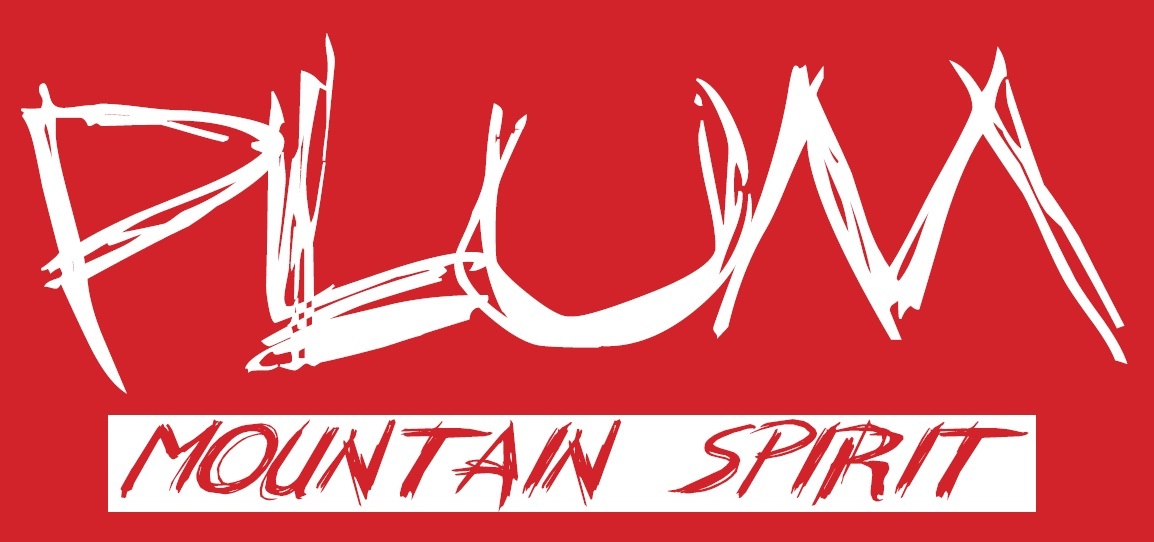

Reader Comments (13)
Hey Brian,
Great B&W cover shot - any idea who, where and when is that?
Nice post as well :)
Thanks Nick. So many epic moments in cycling. I love that photo. Here's the link.
http://www.cyclinginquisition.com/2011/12/feed-zone-at-vuelta-colombia-design.html
Hi Brian. I read both the fueling articles. Good stuff. If I do some of the long trail runs here in the Alps I have been thinking about, I will follow your advice. Definitely would be cool to simply things. What do you think about eating during alpine climbing? I might be moving eight to ten hours, but slowly, at least compared to a bicycle race, a cross country running race, or skimo race. I did the whole Powerbar/Cytomax thing for many years bike racing, and eventually decided I wanted to eat real food. That usually gets me through a day in the mountains, but I have always wondered how would I feel after a long day climbing if I had truly been eating and drinking regularly, not just taking down a few gulps of water or handfuls of trail mix when breaks and belay stances allow. What is the solution for eating and drinking regularly while climbing? Gel products, like Twight and House and company? A water bladder, despite the added weight and complication? Do you see any benefits of eating fat and protein in addition to sugar? Ideas?
Hey Bruno,
I think with climbing, at least when technical, tends to be slower with way more stopping and starting. Any food that tastes good will likely keep you going. And you can probably exceed the 300 cal/hr rule without any issues. Chocolate and sausage and far more calorie dense than gels and taste great.
That said, when you're cruising easier ground or simuling, gels are still a great choice because they go down so easily and quickly. House, Twight and Backes ate a lot of GU on the Czech Direct on Denali years back. They had some other stuff too but relied heavily on gels. House and Garibotti use GU exclusively on a 25 hour repeat of the Infinite Spur on Foraker. Rolo told me that he thought gel was too heavy for the calories you got. He's a thinker, for sure, so it's something to consider but there are plenty of guys who use the stuff.
Clearly, to me at least, carrying a mix of options on single push climbs is the way to go. Cheese, sausage and chocolate for brew stops and gels for moving.
As for water, I think we can get away with a lot less. How many successful epics in the mountains have happened while running completely out of water sometimes days before the end? Crap loads. Not that I recommend going without, obviously, but the old adage of "drink, drink, drink" is likely misguided and unnecessary. Read Noakes' book for the details.
That said, bladders under the clothes and even under a climbing pack works great. For outings where you only need one fill they are quite good. In winter, it's the only reliable way to avoid water freezing, short of a insulated bottle set up, and even that's not fool proof. A bladder in a pack will freeze. Refilling one that you wear under layers is probably a hassle but could be accomplished if you have a shelter to strip down in after brewing up to make the change easier. I'd hate to do that in spin drift. Burrrr.
But really, gulping down 300-500 ml/hour is not that hard while climbing, even if you have to take it out of your pack. The freezing thing still needs to be dealt with, of course.
Another option I've used on big peaks are smaller flexible bottles like Platypus makes. They can be tucked into interior jacket pockets to avoid freezing and you don't have to take your pack off to get to them. Win win.
And, yes, I think fat and protein are important the longer you're out. For a 24 hour deal, you'll be fine with whatever as long as you have enough. But multi day outings probably require more complete nutrition to keep repair and rebuilding requirements properly maintained. Meal replacement powders might be a good way to do this since they're light and you're going to be brewing anyway. Not "real" food by any means but an interesting option to think about for light and fast pushes.
Hey Brian
Thanks for another great post and your insight into fueling.
I sincerely appreciate it.
Being a physiology guru and near my age, do you have any
insight into muscle cramps and how to prevent them?
As I have aged, it has has become a significant issue.
Increases in calcium, magnesium and zinc have helped, but
still struggle with them. Heart medications may be the culprit, but I cannot seem
to find good answers.
Hi Bill,
Cramps. They're a big problem for some folks. Others have no issues. We've been fed all kinds of "reasons" about why they happen and how to treat or prevent them. In reality, all of these ideas are merely solutions rooted in the anecdotal world of pseudo science. Some of them, like the electrolyte theory of cramping, are seen in some books and mostly in the marketing propaganda of electrolyte and sport beverage companies. Look at your attempts to treat them...you bought a bunch of mineral supplements.
Unfortunately, a review of the hard evidence leads us to few solid explanations. Once again, I defer to Dr. Tim Noakes and his thorough examination of the literature. He's been quite thorough. And what he's ultimately come up with holds true for my experience of the phenomena. He terms his theory, the "Central Governer Model". In this concept, cramping is generated by the brain in order to protect the organism from harm, whatever that might be. He explains that there may be inhibitory reflexes that dampen a muscle's ability to contract and this keeps us moving along. As that reflex fatigues due to poor pacing and training state, a cramp results. Read more here http://www.irunfar.com/2013/07/cramping-my-style.html
Now, this is just a theory but more researchers are supporting the idea. In practical terms, you need to pace appropriately for your training state and simply get out more and train if you want to increase that pace. As we age and perhaps life gets in the way of training volume, we simply have less in the tank but maybe still try to go as far or as fast as we used to. This sets us up for exceeding that "cramp threshold".
So, either train more or slow down. Hope that helps.
Hey Brian
Thanks. That is far better information than I have been able to get out of heath professionals in the last few years.
Getting enough training in is always an issue for me.
Quite a bit of the cramping is in moderate exercise and cooling off though.
Hands and arms are some primary areas,
Still try to use what you have shown me.
Thanks again.
Brian,
I use GU almost exclusively, but kinda worry about how much Vitamin E there is in each gel packet. It's quite a bit. What do you think?
Lee,
This aspect of GU is something that has never been on my radar but it's worth looking into since you brought it up. GU likely includes it in their products due to some research suggesting it may help with free radical scavenging (anti oxidant). I think the jury is likely still out on that but it probably doesn't hurt.
As most people who pay attention to nutrition know, the general guidelines for nutrient intakes are based on the Dietary Reference Intakes from the National Academy of Sciences.
More specific recommendations look like this:
Recommended Dietary Allowance (RDA): average daily level of intake sufficient to meet the nutrient requirements of nearly all (97%–98%) healthy people.
Adequate Intake (AI): established when evidence is insufficient to develop an RDA and is set at a level assumed to ensure nutritional adequacy.
Tolerable Upper Intake Level (UL): maximum daily intake unlikely to cause adverse health effects.
Now, if you take a hard look at what this entails for various nutrients and then compare these values to what you find in supplements and what actual hard training athletes take in you'll find quite a disparity, with the latter exceeding the former by factors of 10 or more.
Honestly, I don't know what GU bases their "Vitamin E - 60%" value on but we have to assume it's related to the RDA. The RDA for E is 15 mg or 22.4 IU. That's 9 mg of Vitamin E in each packet.
Safe upper limit (UL) of Vitamin E is based on a probable hemorrhagic effect (bleeding). This amount is set at 1,000 mg or 1,500 IU daily.
So, as you can see, you'd have to eat a lot of gel to get up to this amount. My take on this is it's nothing to really worry about. Stay true to the GU!
Hope that helps.
All excellent points, Brian. Thanks! Makes great sense. True to the GU!
Hi Brian,
I have been using maltodextrin powder(in water) for long day efforts with no complaints. A long day to me is anything greater than 9k of ski touring(B.C. Or inter-mountain west). Where I come into gastric trouble, is on my once a year 2-3week tour. We usually shoot for 9-10k a day. Rest days are about every 5th or 6th day...I'm wondering if GU might be better on my stomach than pure maltodextrin? Often, we eat real food at night(sausage, chocolate, cheese), and oatmeal in early am while water etc is being made. During the day we smile, but don't talk a lot. Less than race pace, but not slow enough for that much talking...
Thanks for your thoughts,
Jerry
Hey Jerry,
Sounds like I need to go on one of those tours! Awesome! That's a lot of skiing.
One thing that comes to mind is the whole issue of carbohydrate transport through the gut. I think the research shows that different sugars use slightly different protein transporters to get things to where they need to be. These molecular gateways can get saturated. That's why mixing your sugars seems to do better than just one source. Obviously, doing the amount of exercise you're doing on one of these ski orgies you go on is pretty unique with equally unique nutritional demands. Eating plenty of high quality whole foods at night and in the morning should balance out the simple intake during the day. I'd try varying your carb sources and see what you come up with. Hope that helps.
Ha yes, it is a lot. I find it difficult to leave my children more than once a year these days, so I train, train, train, and am lucky to have a wife that supports my orgies. Thanks for the thoughts on multiple sources of sugars. Maybe TMI, but after a few surgeries for colin cancer and after that a year plus of Oxaliplatin(clean 2+years now), I have been focusing on colon/gut health. Seems that keeping a healthy G.I. system might be key. Just need to do it light, right and with a reasonable amount of calories. Will keep trying. Fk Cancer.
Thanks for your blog, I'm surprised we have not crossed paths over the years..Perhaps we have.
Regardless, I appreciate you putting out your hard earned thoughts/information.
Jerry